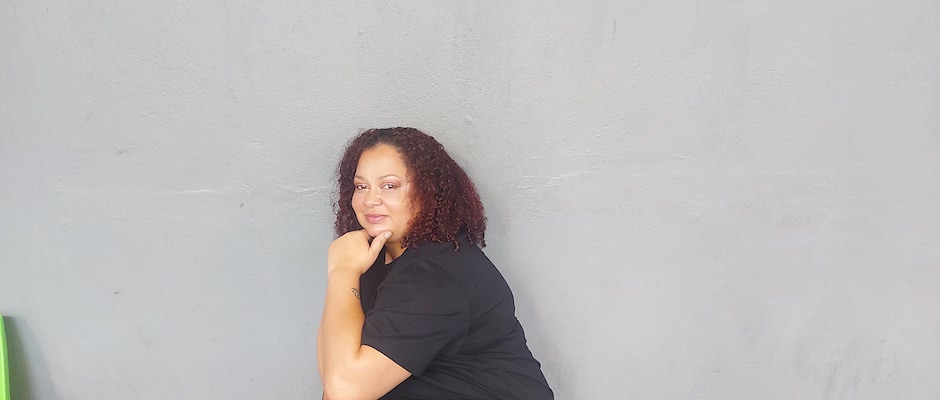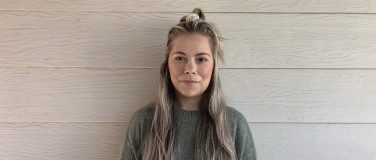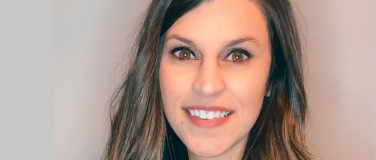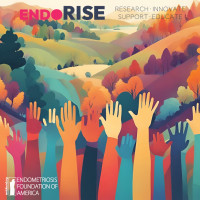
I started my menstrual cycle at the age of 11. I was made to believe that menstruation is painful and that I just need to suck it up. No one wants to be seen as a softie, so I continued handling the pain as best as I could.
One day, at the age of 16, I was on my menstrual cycle and began feeling terribly ill. I was bed ridden, cramped up in the fetal position, experiencing the most horrific pain that was coupled with nausea, cold sweats, and dizziness. I was rushed to hospital where tests and physical exams were performed. My iron levels were extremely low and further tests pointed to endometriosis.
The doctor immediately booked exploratory surgery the next day where stage 4 endometriosis was confirmed. It was aggressive, with lesions on my uterus, fallopian tubes, ovaries, and bowel. A lemon-sized chocolate cyst that was found on the ovary also had to be cauterized.
At this tender age of 16, I was cautioned that I might never bear children of my own. I was gutted. Getting married and having a family of their own was every girl’s dream. I was put on contraceptives to regulate my cycles. I managed to soldier on and had great, but mostly trying, days. The pain would start one week before menstruation and would last during my cycle as well as one week after my cycle. I only had one pain free week in an entire month.
Having surgery became a yearly routine. I would end up getting cysts which caused extreme pain that left me bedridden, curled up in a ball, and unable to eat or sleep no matter what painkillers I took. This carried on for years.
I got married at 22 and we started trying to conceive. The disappointment of negative pregnancy tests month after month was harrowing. Trying to conceive became a full time job. I still had yearly surgeries in hopes that the endometriosis would be completely eradicated, but I was wrong. The battle was not over.
At the age of 26, I finally found a specialist who was experienced enough to do a resection on my endometriosis riddled bowel. After surgery, I was told that the endometriosis was still as aggressive as before and my fallopian tubes were removed. Further reports revealed that my endometriosis had spread to my bladder, inside my uterine wall, and there were adhesions that fused my internal organs together.
My husband and I realized that conceiving naturally would not be possible and decided to give IVF (in vitro fertilization) a go. We saved up for over a year and managed to start the IVF process. Unfortunately, this yielded negative results. We still had frozen embryos in storage at the lab and ventured into the possibility of surrogacy. We found a suitable candidate but that route also proved to be fruitless. It was a heartbreaking experience that I wished we had never pursued.
I had given up hope and yearned for a somewhat normal and happy life. We decided to not actively try to conceive any longer, although it was still stuck in the back of our minds. I managed the pain with nerve blockers and painkillers over the following years. I had just turned 31 and was overcome with excruciating pain once again. The painkillers were no match for what I was experiencing. I already knew that the endometriosis had returned and with a vengeance.
I plucked up the courage and consulted my specialist. I was immediately scheduled for surgery where I was prepared for the worst case scenario.
After surgery, the doctor popped in and gave the report: "Your uterus and ovaries had to be removed. Your organs were fused together, and you also had a large mass between your uterus and rectum which we had to excise." I felt a large lump in my throat. This was it. Our dream of becoming biological parents had come to an end.
Two weeks have passed since the surgery. I woke up one morning with severe pain and knew something was amiss. Doctor wanted to see me right away. It so happens that I had a complication from the surgery and developed a fistula. After the devastating news about my hysterectomy, I didn't think anything could be worse. Yet, here we were, the doctor morbidly telling me: "Your body is too inflamed to fix the fistula. You need a stoma for approximately four months."
I had surgery the next day. I was now the not so proud owner of "Farty." Yes I named it. Apparently it's a thing among the stoma community.
Three months later, I was approved for fistula repair and had the surgery. This was by far the most difficult surgery to recover from. I still had to tolerate Farty for six more weeks and I finally had the stoma reversal.
The silver lining in my journey happened when we welcomed our adopted son into our lives, just four months out of my recovery. Everything that happened in my life was in preparation for this truly breathtaking and beautiful moment. I fell in love even before I laid eyes on him. At just three days old he was in our care. I quickly learned that pregnancy does not make you a mother. We are born nurturers. And I love him as if I gave birth to him. He is and will forever remain the greatest blessing in our lives.
Donavève Mangera is from Johannesburg, South Africa. She works as an accounting assistant and also an advocate for endometriosis and mental health awareness in her spare time. She loves music, painting, and arts and craft.
She has been battling endometriosis for just over 20 years and infertility for 15 years. Donaveve and her husband have since been blessed with an adorable son through adoption. Although her journey was a tough battle, she has managed to find the silver lining to her story.
Editor's note: Would you like to contribute to EndoStories? Click here to learn how to submit your work.
*Patient stories submitted to EndoFound.org are the views of the patient and not necessarily those of the foundation. All testimonials are from real patients, and may not reflect the typical patient’s experience, and are not intended to represent or guarantee that anyone will achieve the same or similar results.









